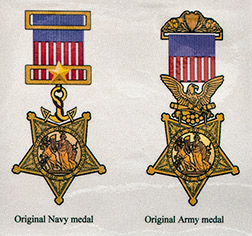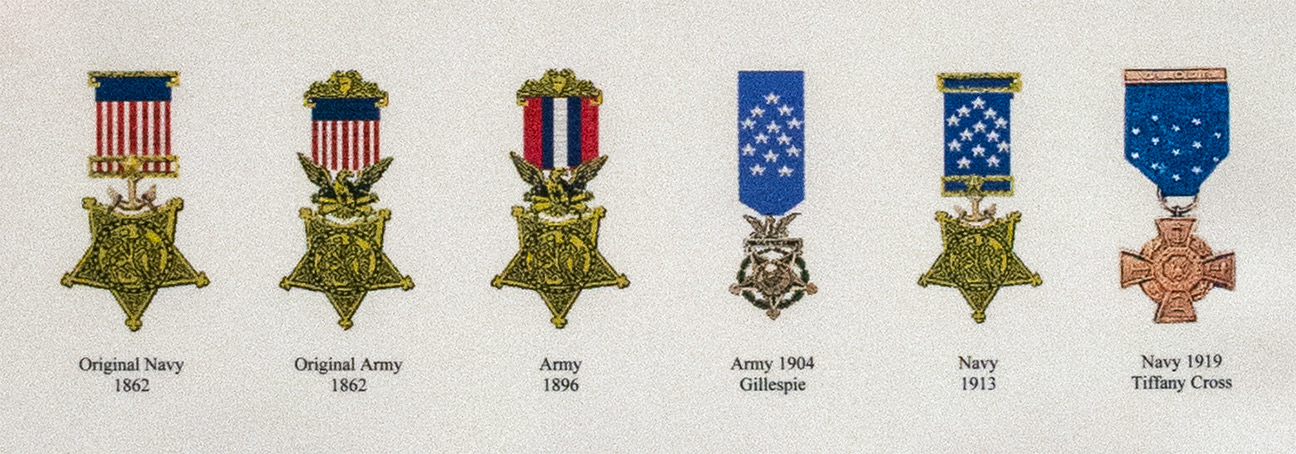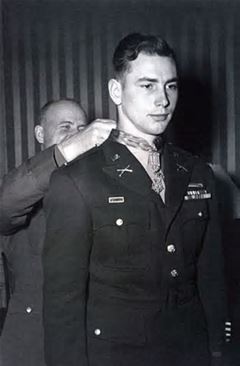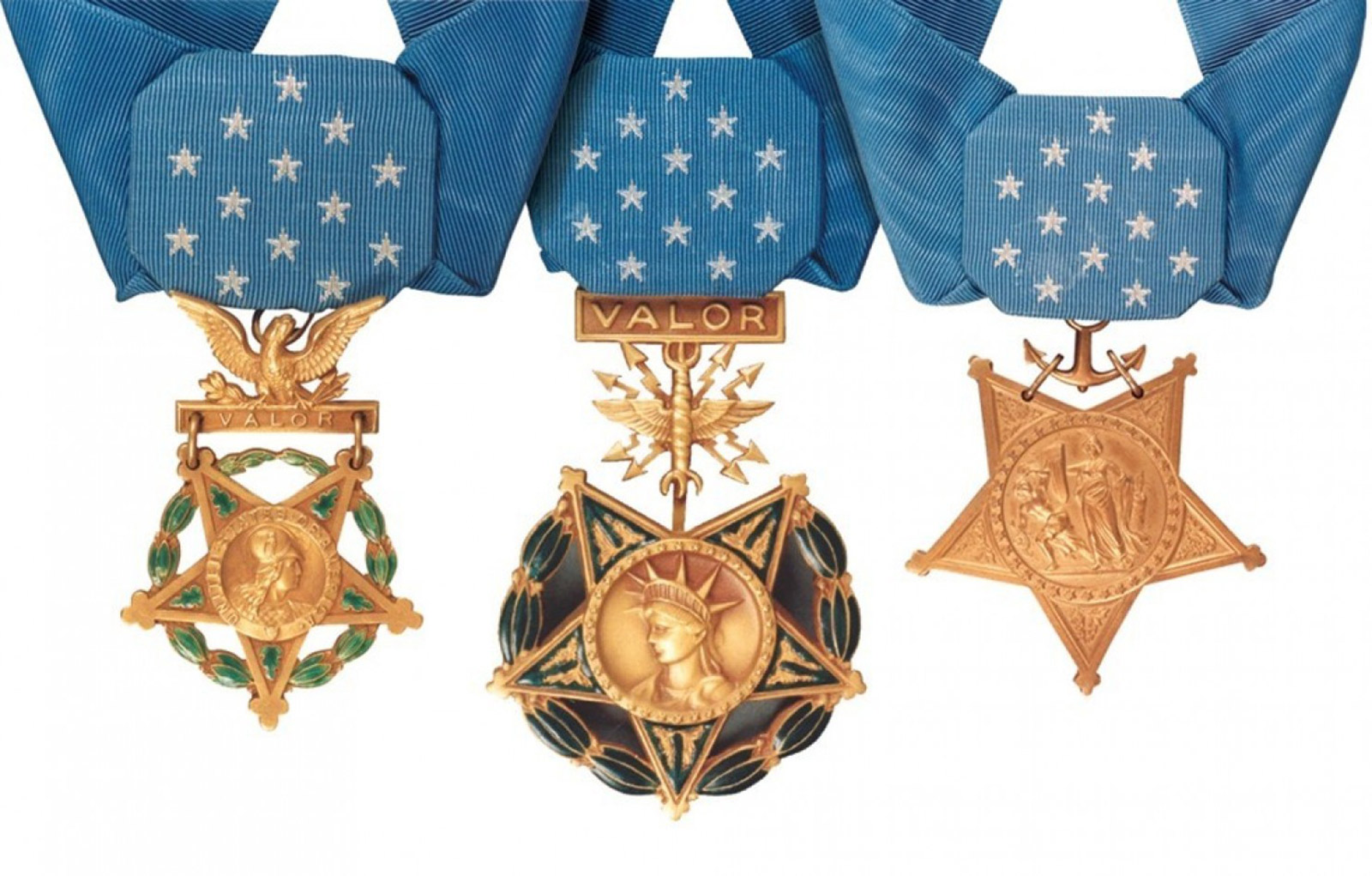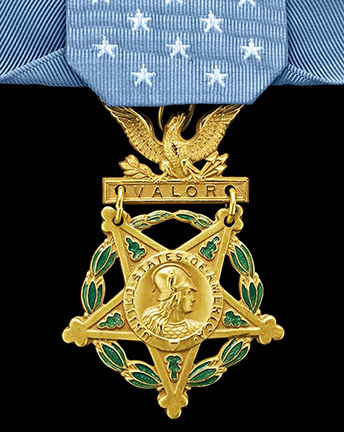History of the Medal of Honor
The Congressional Medal of Honor had its beginnings during the Civil War, when Iowa Senator James W. Grimes, chairman of the Senate Naval Committee, introduced P.R. No. 82 in Congress to create a medal of honor "to promote the efficiency of the Navy." President Lincoln approved the bill in December of 1861.
Lincoln signed a similar bill for the Army in July of 1862 authorizing 2,000 Medals of Honor to "be presented, in the name of the Congress, to such noncommissioned officers and privates as shall most distinguish themselves by their gallantry in action, and other soldier-like qualities".
1,520 Medals of Honor were awarded to Civil War veterans, and 242 to veterans of the Indian Campaigns. The last Civil War medal was granted in 1917. By 1876, a review board had decided the medal should only be given to those whose heroism was above and beyond the usual standard of duty.
The selected Medal of Honor design consisted of an inverted, 5-pointed star. On each point was a cluster of laurel leaves to represent victory, with a cluster of OAK to represent strength. Inside the circle of 34 stars, equal to the number of stars in the U.S. Flag at the time in 1862, to the right is the image of Minerva, the Roman goddess of wisdom and war. On her helmet is perched an owl, representing wisdom. In keeping with the Roman tradition, her left hand holds a bundle of rods and an ax blade, symbolic of authority. The shield in her right hand is the shield of the Union of our states (similar to the shield on our seal and other important emblems). Recoiling from Minerva is a man clutching snakes in his hands. He represented discord and the insignia came to be known as "Minerva Repulsing Discord." Taken in the context of the Civil War soldiers and sailors struggling to overcome the discord of the states and preserve the Union, the design was as fitting as it was symbolic.
Later designs were made specifically for various branches of the military. For the Navy, the Medal was suspended from an anchor attached to a ribbon with a blue bar at the top and vertical red and white stripes below. The Army used the same design for the medal, but suspended it from an eagle clutching a cannon and a saber in its talons.
New regulations published on June 26, 1897 stated that
• Medals of Honor could only be awarded for "gallantry and intrepidity" above and beyond that of one's fellow soldiers;
• Required the submission for the Medal of Honor to be made by a person other than the veteran who had performed the heroic deed, with testimony, under oath, of at least one eyewitness to the heroic deed;
• And set a time limit of one year following the heroic act for future submissions. The Medal of Honor is hung around the bearer's neck, the only award to be worn so.
October 16, 1916, a board of five generals convened to review all Congressional Medals of Honor. The review board released its findings on Feb. 5, 1917, striking the names of 911 medal recipients from the honor roll who did not qualify under the new standards.
The Congressional Act of 9 July 1918 defined a series of awards, setting the Medal of Honor at the top of a new "Pyramid of Honor" which provided several levels of awards: The Distinguished Service Cross, The Distinguished Service Medal, and the Silver Star. The lesser awards were authorized for presentation by the President, "BUT NOT IN THE NAME OF CONGRESS." Recommendations for Medals of Honor were to be made within 2 years of the act of heroism for which it was to be awarded, and the Medal was to be presented within 3 years.
There have been only 3,394 Medals of Honor given through the years. Of those Medals, six have been given to men who were found to have an association with Riley County.
